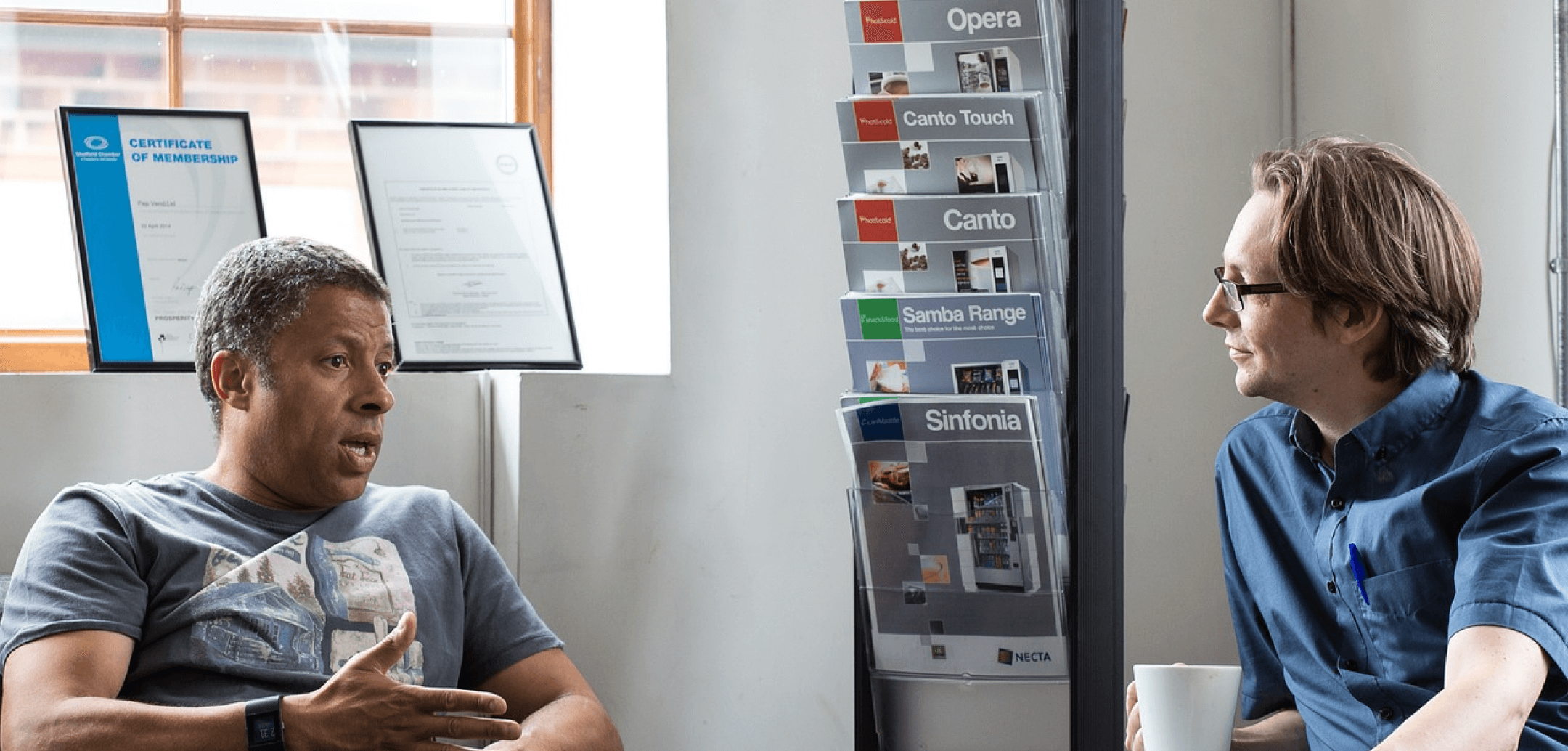A Friendlier Way to Face the Panel
Practice with JobCity, and turn those nerve-wracking interview moments into smooth, confident answers. Your dream job is a tap away!
My name is Siti, and after a few years away from the workforce to
take care of my family, I was ready to jump back into the job
market. I knew I wanted to find a position in manual labor, but
the thought of facing an interview panel made me nervous. That’s
when I found the JobCity app.
Using the app was a game changer. It allowed me to practice common
interview questions in a friendly and supportive environment. I
could rehearse my answers as many times as I needed, and the
feedback helped me refine my responses. Each session made me feel
more confident and prepared.
When the day of my interview arrived, I walked in feeling ready.
Instead of feeling intimidated by the panel, I greeted them with a
smile and answered their questions smoothly. I could tell they
appreciated my honesty and the effort I’d put into preparing.
Thanks to JobCity, I faced that panel with confidence, and I even
got the job!

1. Start with a Warm Introduction
Creating a comfortable environment helps candidates feel at ease and encourages open communication.
What to Do:
• Begin with small talk to break the ice.
• Share a brief overview of the interview process to set
expectations.
• Use positive and open body language to build rapport.
Why It Matters:
A relaxed candidate is more likely to reveal their authentic self,
making it easier to assess their potential.
2. Use Open-Ended Questions
Open-ended questions encourage candidates to provide detailed answers, showcasing their thought processes and problem-solving skills.
Examples of Open-Ended Questions:
• “Can you walk me through a challenging project you successfully
completed?”
• “How do you approach learning a new skill or tool?”
• “What motivates you to perform at your best?”
Why It Matters:
These questions provide insight into the candidate’s experiences,
motivations, and how they approach challenges.
3. Focus on Behavioral Questions
Behavioral questions help predict future performance by understanding how candidates handled past situations.
Examples Using the STAR Method:
• Situation: “Describe a time when you faced a major obstacle at
work.”
• Task: “What goal were you trying to achieve?”
• Action: “What specific steps did you take to overcome the
obstacle?”
• Result: “What was the outcome, and what did you learn?”
Why It Matters:
Behavioral questions reveal practical skills and decision-making
abilities, giving a clear picture of how a candidate performs in
real-world scenarios.

4. Assess Problem-Solving and Critical Thinking Skills
Present hypothetical or real-world scenarios to evaluate how candidates think on their feet.
Examples of Scenario-Based Questions:
• “If you were faced with [specific challenge], how would you handle
it?”
• “Imagine a key team member suddenly leaves during a project
deadline—what steps would you take to ensure success?”
Why It Matters:
This approach uncovers a candidate’s ability to analyze situations,
make decisions, and remain calm under pressure.
5. Explore Cultural and Team Fit
A candidate’s potential isn’t just about skills—it’s also about how well they align with the company culture and team dynamics.
What to Ask:
• “What type of work environment helps you thrive?”
• “How do you handle conflicts or disagreements with colleagues?”
• “What role do you typically take in a team setting?”
Why It Matters:
Understanding a candidate’s personality and values ensures they’ll
be a good fit for your organization’s culture.

6. Dig Deeper with Follow-Up Questions
Don’t stop at the first answer—probe further to uncover additional details and insights
Follow-Up Techniques:
• Ask “Why?” or “How?” to understand their thought process.
• Request specific examples or elaborations, such as, “Can you
provide more details about that situation?”
• Reflect on their answers by saying, “That’s interesting—tell me
more about how you achieved that.”
Why It Matters:
Follow-up questions reveal depth and help distinguish between
rehearsed answers and genuine experiences.
7. Evaluate Soft Skills
Soft skills like communication, adaptability, and emotional intelligence are critical for most roles.
How to Assess:
• Observe how candidates articulate their thoughts and respond to
challenging questions.
• Use role-playing scenarios to test adaptability and interpersonal
skills.
• Ask, “How do you manage stress or unexpected changes in your
work?”
Why It Matters:
Soft skills are often harder to teach than technical skills, making
them a key indicator of long-term success.
8. Listen Actively
Pay attention to not just what candidates say but also how they say it.
What to Look For:
• Confidence and enthusiasm in their tone.
• Consistency in their answers.
• Body language that complements their verbal responses.
Why It Matters:
Active listening helps you pick up on subtle cues that indicate a
candidate’s confidence, sincerity, and engagement.

9. Involve Multiple Interviewers
A panel interview or collaborative evaluation provides diverse perspectives on a candidate’s potential.
What to Do:
• Include team members who will work closely with the candidate.
• Assign different areas of focus to each interviewer (e.g.,
technical skills, cultural fit, or leadership qualities).
Why It Matters:
Multiple viewpoints reduce bias and lead to a more well-rounded
assessment of the candidate.
10. End with a Candidate-Centric Approach
The way you conclude the interview can also reveal potential.
Ask Questions Like:
• “What questions do you have about the role or company?”
• “What are your long-term career aspirations?”
Why It Matters:
A candidate’s questions and goals can reveal their priorities, level
of preparation, and genuine interest in the role.
Conclusion
Uncovering a candidate’s true potential during an interview requires thoughtful preparation and active engagement. By asking the right questions, focusing on both hard and soft skills, and paying attention to subtle cues, you can identify candidates who not only meet the job requirements but also have the potential to excel in your organization.
With these tips, your interviews can go beyond surface-level interactions to uncover the true potential of every candidate you meet.
